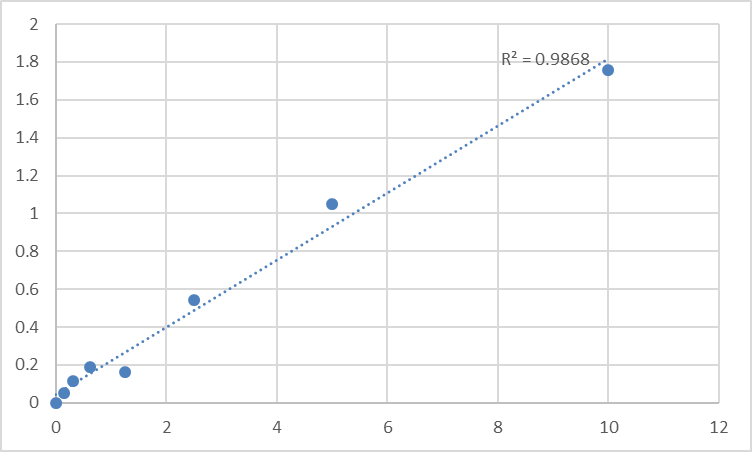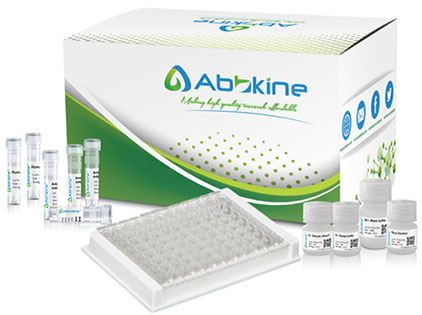| Product name | Human E3 ubiquitin-protein ligase UBR1 (UBR1) ELISA Kit |
| Reactivity | Human |
| Applications | ELISA |
| Applications notes | This Human E3 ubiquitin-protein ligase UBR1 (UBR1) ELISA Kit employs a two-site sandwich ELISA to quantitate UBR1 in samples. An antibody specific for UBR1 has been pre-coated onto a microplate. Standards and samples are pipetted into the wells and anyUBR1 present is bound by the immobilized antibody. After removing any unbound substances, a biotin-conjugated antibody specific for UBR1 is added to the wells. After washing, Streptavidin conjugated Horseradish Peroxidase (HRP) is added to the wells. Following a wash to remove any unbound avidin-enzyme reagent, a substrate solution is added to the wells and color develops in proportion to the amount of UBR1 bound in the initial step. The color development is stopped and the intensity of the color is measured. |
| Detection method | Colorimetric |
| SampleType | Cell culture supernatants, Other biological fluids, Plasma, Serum |
| Assay type | Sandwich ELISA (quantitative) |
| Assay duration | Multiple steps standard sandwich ELISA assay with a working time of 3-5 hours. It depends on the experience of the operation person. |
| Alternative | UBR1; JBS; MGC142065; MGC142067; E3a ligase; ubiquitin ligase E3 alpha-I; ubiquitin-protein ligase E3-alpha |
| Kit components | • Human E3 ubiquitin-protein ligase UBR1 microplate • Human E3 ubiquitin-protein ligase UBR1 standard • Human E3 ubiquitin-protein ligase UBR1 detect antibody • Streptavidin-HRP • Standard diluent • Assay buffer • HRP substrate • Stop solution • Wash buffer • Plate covers |
| Features & Benefits | Human E3 ubiquitin-protein ligase UBR1 (UBR1) ELISA Kit has high sensitivity and excellent specificity for detection of Human UBR1. No significant cross-reactivity or interference between Human UBR1 and analogues was observed. |
| Calibration range | Please inquire |
| Limit of detection | Please inquire |
| Usage notes | • Do not mix components from different kit lots or use reagents beyond the kit expiration date. • Allow all reagents to warm to room temperature for at least 30 minutes before opening. • Pre-rinse the pipet tip with reagent, use fresh pipet tips for each sample, standard and reagent to avoid contamination. • Unused wells must be kept desiccated at 4 °C in the sealed bag provided. • Mix Thoroughly is very important for the result. It is recommended using low frequency oscillator or slight hand shaking every 10 minutes. • It is recommended that all samples and standards be assayed in duplicate or triplicate. |
| Storage instructions | The unopened kit should be stored at 2 - 8°C. After opening, please store refer to protocols. |
| Shipping | Gel pack with blue ice. |
| Precautions | The product listed herein is for research use only and is not intended for use in human or clinical diagnosis. Suggested applications of our products are not recommendations to use our products in violation of any patent or as a license. We cannot be responsible for patent infringements or other violations that may occur with the use of this product. |
| Background | The mouse Ubr1 protein is a 1,757-residue, 200-kD protein that contains regions with sequence similarity to the 225-kD UBR1 protein of S. cerevisiae. There are apparent UBR1 homologs in other eukaryotes, thus defining a distinct family of proteins, the UBR family. The residues essential for substrate recognition by the yeast UBR1 protein are conserved in the mouse Ubr1 protein. Regions of similarity among the UBR family members include a putative zinc finger and RING-H2 finger, another zinc-binding domain. Northern blot analysis detected ubiquitous expression in human and adult mouse tissues, with highest levels in skeletal muscle and heart. In mouse embryos, in situ hybridization showed that Ubr1 expression is highest in the branchial arches and in the tail and limb buds. |
| Gene ID | 197131 |
| Alternative | UBR1; JBS; MGC142065; MGC142067; E3a ligase; ubiquitin ligase E3 alpha-I; ubiquitin-protein ligase E3-alpha |
| Accession | Q8IWV7 |

Fig.1. Human E3 ubiquitin-protein ligase UBR1 (UBR1) Standard Curve.

Fig.2. Abbkine ELISA kit is series of sandwich ELISA to quantitate specific protein in samples.
You must be logged in to post a review.
Reviews
There are no reviews yet.